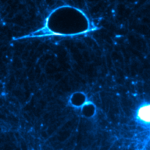Link to Pubmed [PMID] – 26278641
Biochim. Biophys. Acta 2016 Mar;1858(3):512-25
Clostridial binary toxins (Clostridium perfringens Iota toxin, Clostridium difficile transferase, Clostridium spiroforme toxin, Clostridium botulinum C2 toxin) as Bacillus binary toxins, including Bacillus anthracis toxins consist of two independent proteins, one being the binding component which mediates the internalization into cell of the intracellularly active component. Clostridial binary toxins induce actin cytoskeleton disorganization through mono-ADP-ribosylation of globular actin and are responsible for enteric diseases. Clostridial and Bacillus binary toxins share structurally and functionally related binding components which recognize specific cell receptors, oligomerize, form pores in endocytic vesicle membrane, and mediate the transport of the enzymatic component into the cytosol. Binding components retain the global structure of pore-forming toxins (PFTs) from the cholesterol-dependent cytotoxin family such as perfringolysin. However, their pore-forming activity notably that of clostridial binding components is more related to that of heptameric PFT family including aerolysin and C. perfringens epsilon toxin. This review focuses upon pore-forming activity of clostridial binary toxins compared to other related PFTs. This article is part of a Special Issue entitled: Pore-Forming Toxins edited by Mauro Dalla Serra and Franco Gambale.

